|
On Saturday the 23rd
I got up early and headed down south to my usual haunts. I hit
Ladner Trunk Road around 9, and decided to dip down to the bay.
I turned down one of the higher-numbered streets, and stopped
almost immediately when I saw a largish bird eating white berries
from a bush. It was a female Northern Flicker.
|
|
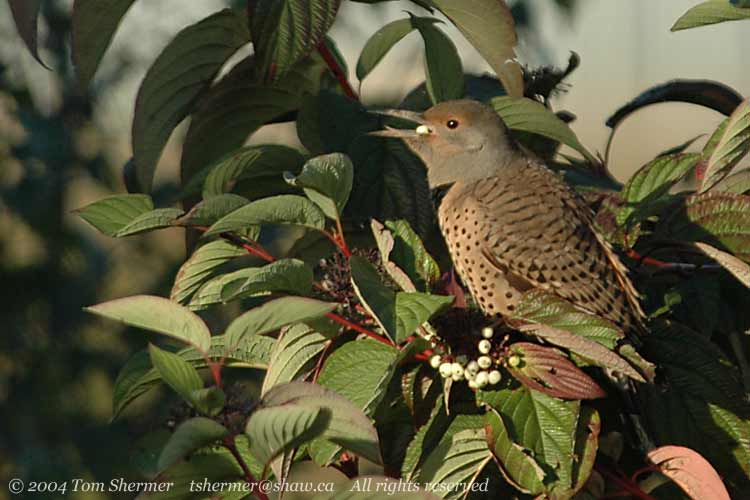 |
|
I think that someone
forgot to tell her that as a flicker, she's a type of woodpecker,
and she should be knocking on wood and eating insects. Quality
control has really been slipping down at the bird factory.
Her vegetarian diet
doesn't seem to have done her any harm, though, as she still cuts
quite a beautiful figure. Have a look at her landing on another
plant and tell me if you don't agree.
|
|
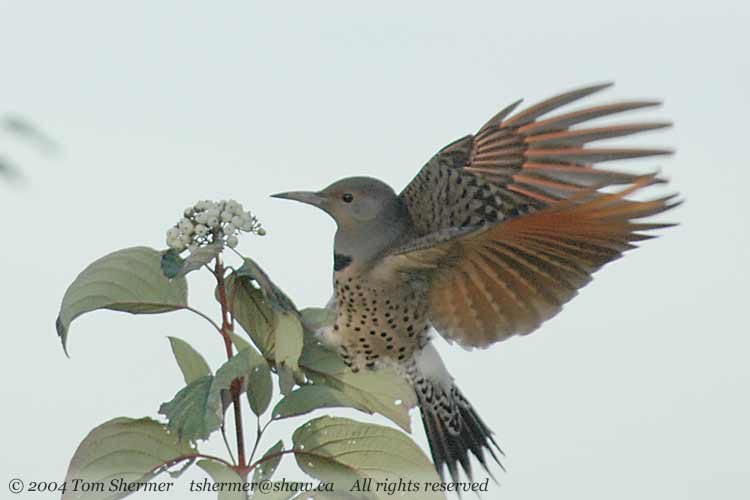 |
| Nothing
much was going on down at the bay, so quite soon I was driving back
the other direction. There I saw a Red-tailed Hawk sailing over
one of the agricultural fields. He did a bit of dipping and turning,
and occassionally the sun would light up his underside. |
|
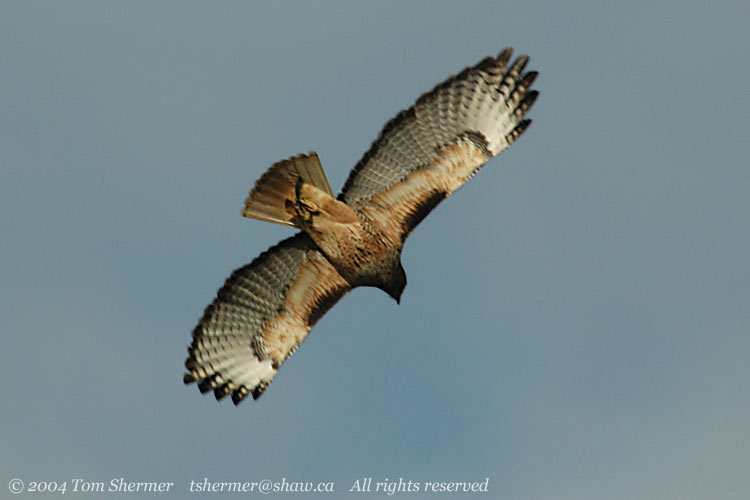 |
| After the
hawk went on his way, I decided to head over to Reifel. I got there
around 10:15 and lazily made my way inside. A short ways after the
entrance, I stopped to take photos of some birds gathered near a
feeder. There I caught this lady, a Red-winged Blackbird. The beauty
of her rich colors was nicely offset by the little piece of whatever
that was stuck to the end of her bill. |
|
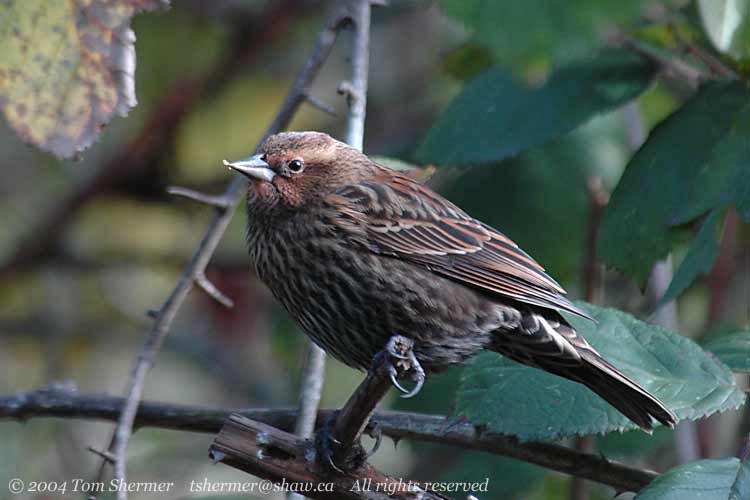 |
| It was a
nice day, and I decided that I would spend some time trying to get
good shots of two of the types of ducks that I knew were in residence:
Northern Pintails and Bufflehead. I sat down beside one of the ponds
and started with a pintail. |
|
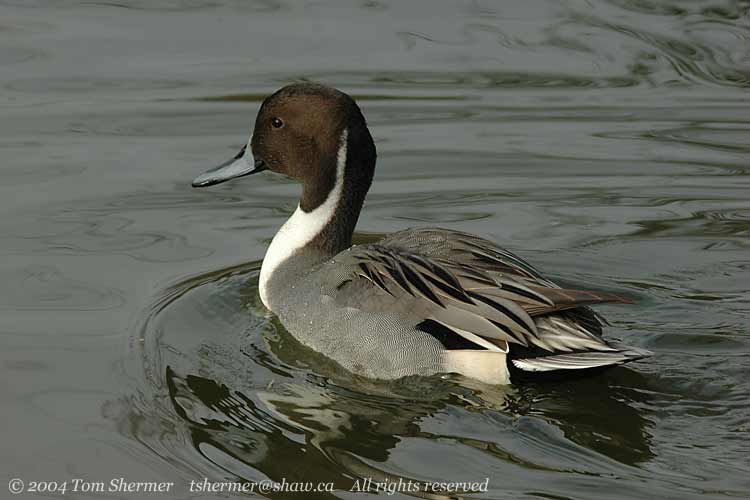 |
|
I was happy with how
the Pintail cooperated for my camera, but my next subject, the
Bufflehead, was not so accommodating. Bufflehead are more shy
than Northern Pintails, and less prevalent at the refuge, so I
had to be more patient and shoot from a longer distance.
Of course, it was worth
it. I think that Bufflehead, especially the males, are really
cute little critters. They're quite small, being about half the
length of a Mallard, as you can see in this photo.
|
|
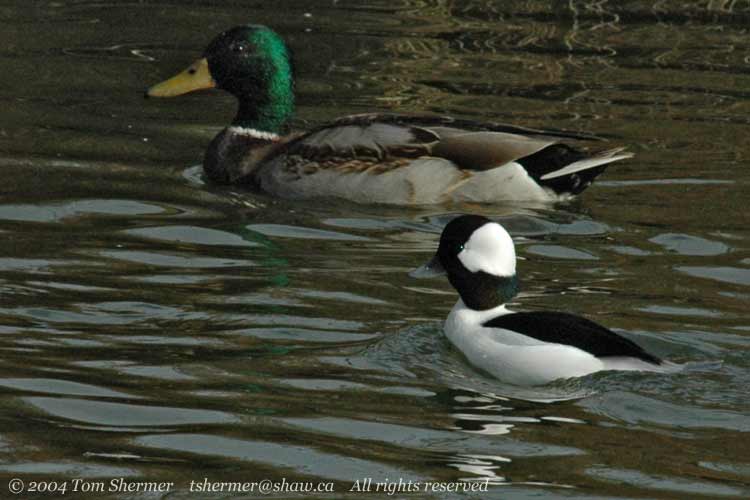 |
|
In contrast, the Northern
Pintail is about the same size as a Mallard.
The female Bufflehead
is grey-brown, with a white patch on the side of her head. Here's
a shot of both a male and a female.
|
|
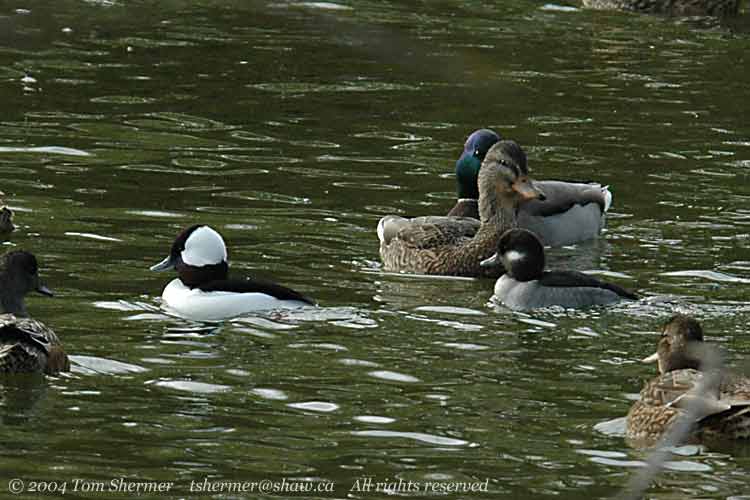 |
|
Bufflehead males aren't
that easy to photograph, as they have both bright white and dark
black on them. It's hard not to overexpose the white or underexpose
the black.
If you think Buffleheads
are pushovers because they're small, you'd better think again.
I told this guy that his mother was a loon and he came charging
right at me.
|
|
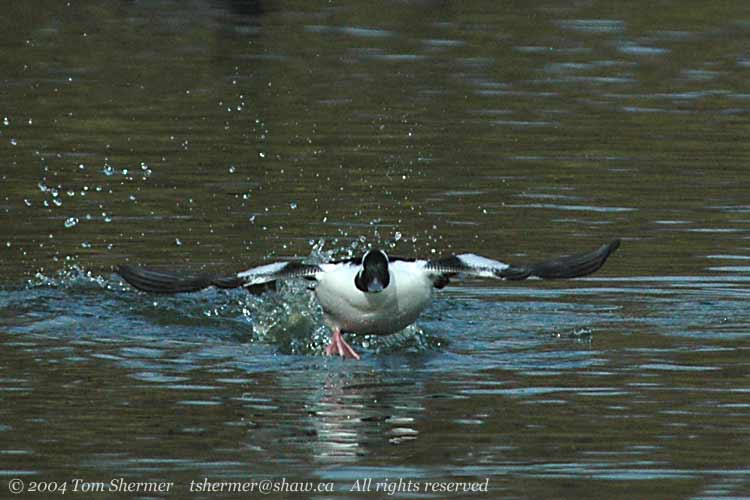 |
|
Actually, I think he
was just taking off. And I admit to having removed a Mallard head
from the foreground of that photo in Photoshop.
And on the subject
of cute little ducks, there was a male Hooded Merganser floating
about, with his hood down. These guys are just a bit bigger than
Bufflehead. But they've got those mesmerizing yellow eyes.
|
|
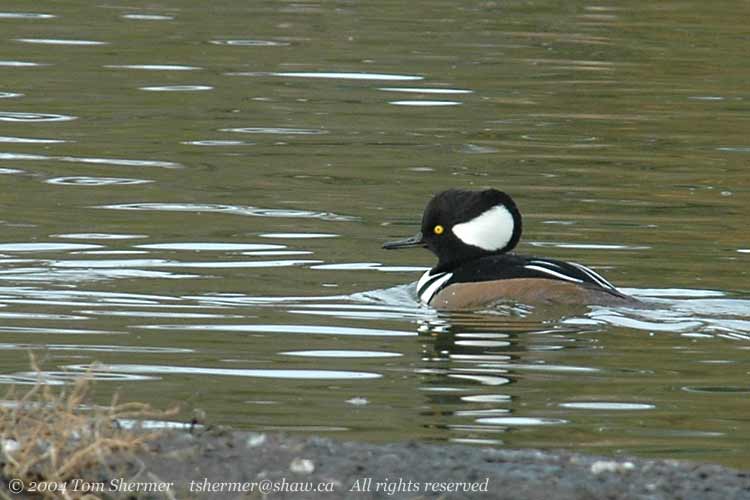 |
|
After spending about
45 minutes with the ducks, I got up, and looked up, and noticed
a Bald Eagle coming my way. He went past without stopping or circling..
|
|
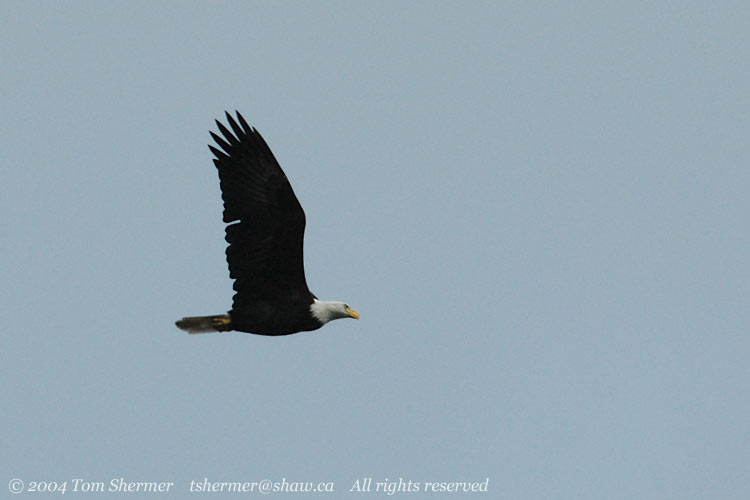 |
|
I trod on, reaching
the viewing tower around 11:30, where I watched the nearby feeders
to see if anything unusual would show up. Nothing did, but I did
get a few good shots of the ever-present Black-capped Chickadees.
|
|
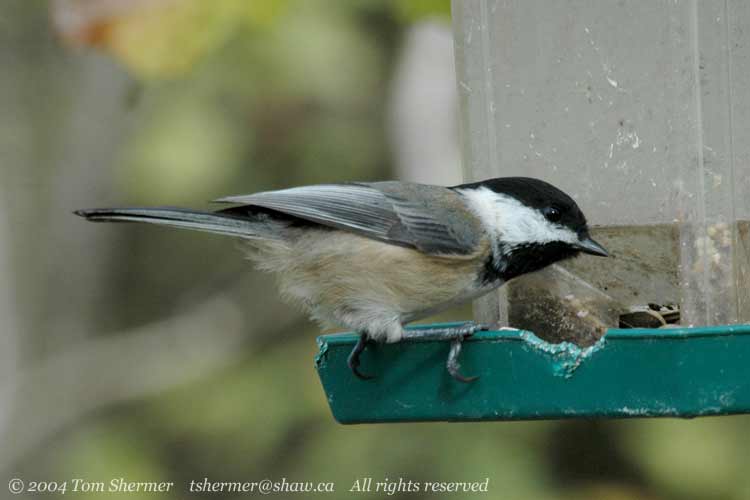 |
|
Well, out over the
foreshore I heard a big commotion. Something had the visiting
Snow Geese in a tizzy and they all lifted up into the sky. Here
is just a very small portion of the flock. (I wasn't carrying
my wide-angle lens.)
|
|
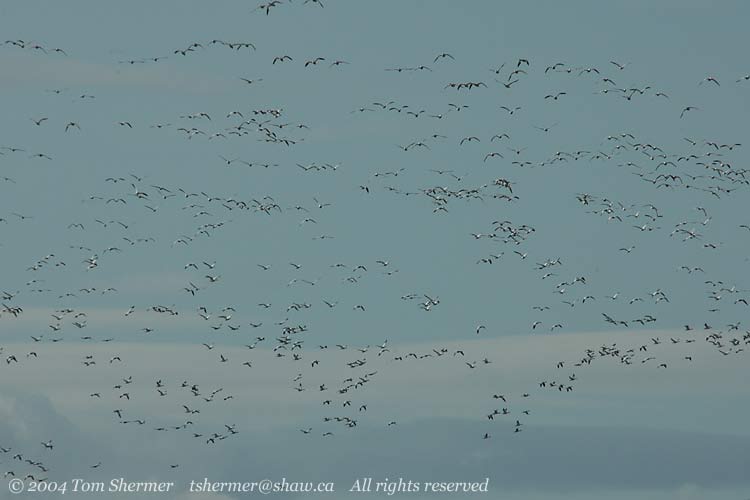 |
|
Reifel is famous for
the huge flock of Snow Geese that winter there.
I started heading back
along the middle dyke, and came upon this Lesser Scaup in the
pond to the east of me. I only took a few shots, as he was far
away, and the clearest one turned out a little overexposed.
|
|
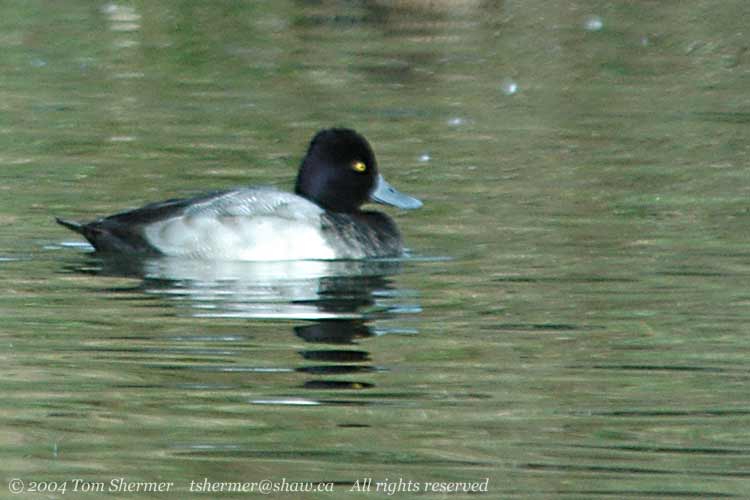 |
|
A little closer to
me was a bird of a different sort. This guy isn't a duck, he's
a grebe...a Pied-billed Grebe. He's small, about the same size
as the Bufflehead. Seeing this guy, I thought about the photos
I had gotten earlier in the year of a Pied-billed Grebe feeding
its young.
|
|
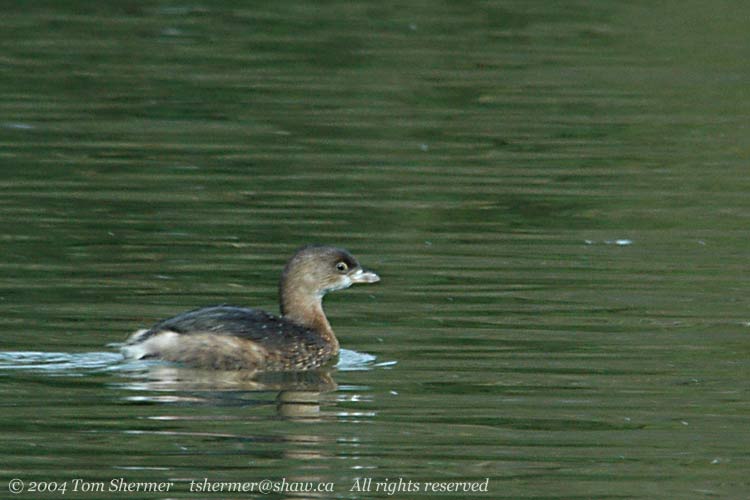 |
|
I proceded to the east
edge of the refuge, to look along the path for owls. I didn't
find any owls, but I did find an interesting scene in the field
to my east...a collection of ducks (mainly Mallard, American Wigeon,
and Northern Pintail) spread across a well-irrigated field. I
couldn't resist the natural element of the birds with the imposed
form of the parallel lines in the field, and ended up with around
100 photos of the scene. Here's one, with the strong convergence
leading the eye to the trees in the background.
|
|
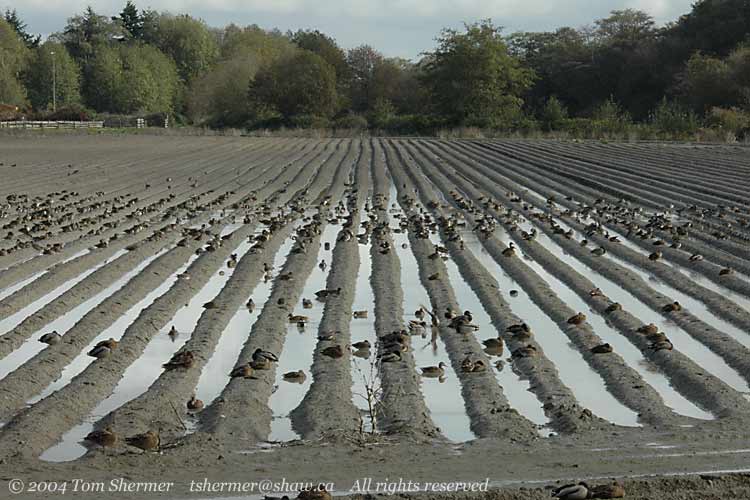 |
|
And here's another,
which to me looks more like "a day at the beach for ducks."
|
|
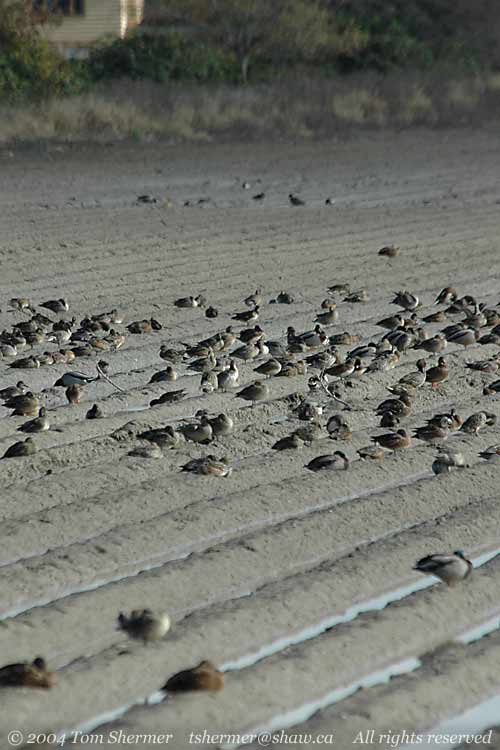 |
|
After those landscapes,
I decided to head on, and made my way back towards the parking
lot. At the warming hut (which is right inside the entrance) I
looked out over the pond and found a female Hooded Merganser.
I'm always amazed at how different the females of this species
look from the males (the yellow-eye white-spot-on-head little
duck from eight pictures ago). The hood on the male always looks
solid, and the hood on the female seems wispy and often translucent.
|
|
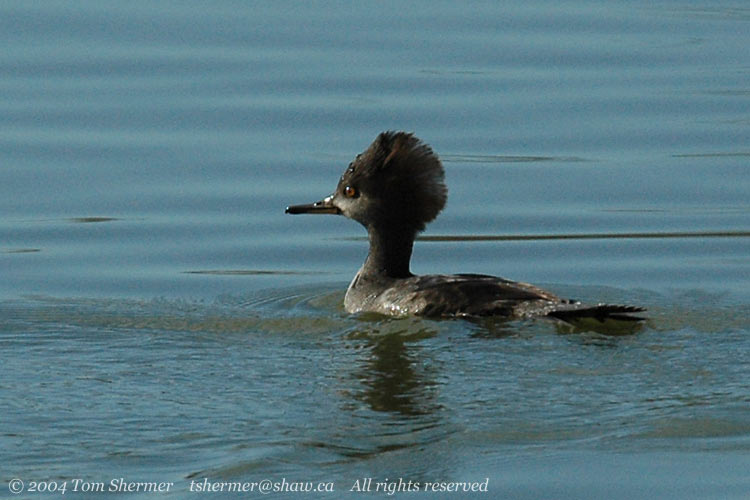 |
| Back in
the parking lot, I took a walk over to the pond across from the
entrance. There I found some ducks and a fellow you all should recognize
by now, the American Coot. Like I always do, I went for the coot's
feet. |
|
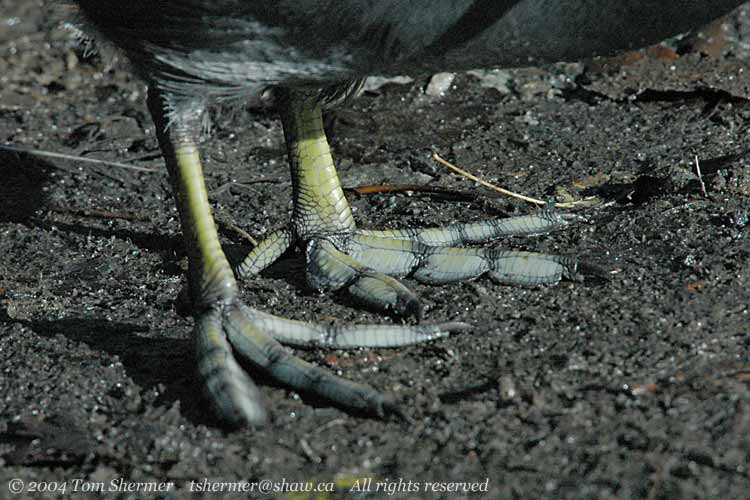 |
| I knew that
coots had those neat yellow-green legs and feet, but what I learned
on this day was that their young'uns have legs and feet that are
even more green. |
|
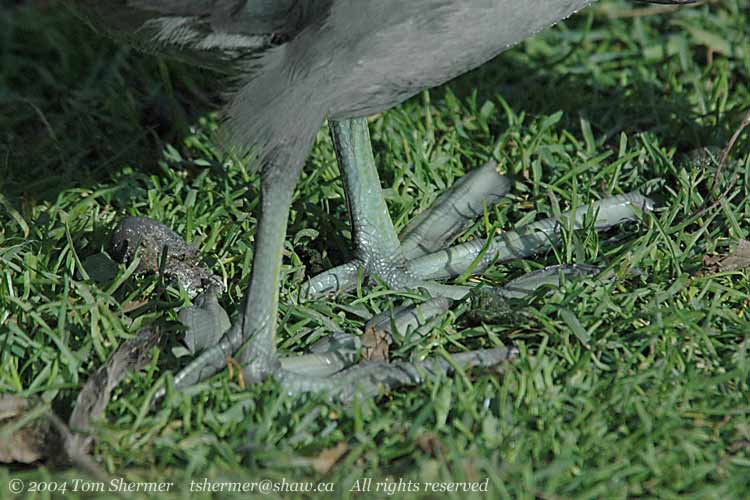 |
|
However, I'm puzzled
by this. I can think of no reason why it would be evolutionarily
advantageous for your legs to turn more yellow with age. Hmmmm.
There were a few Rock
Doves around, too, and I was captivated by their colors. Here's
one with a little bit of brown mixed in with the grey.
|
|
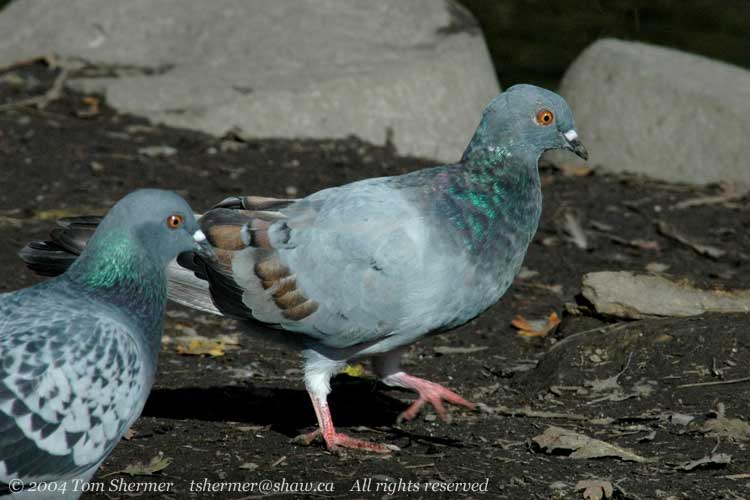 |
| Well, just
as I was about to pack it in, a woman came along with her son and
a big (and I mean big) sack of birdseed (think waist-high
sack of potatoes big). As she started throwing handfuls of the seed
on the ground, the ducks in the area (mainly Mallards) started crowding
together. It was like a rave for ducks. I snapped off a few (well,
okay, two hundred) photos of the Mallard mob. Here's what they mostly
look like...ducks all crammed together, and lovin' every minute
of it. |
|
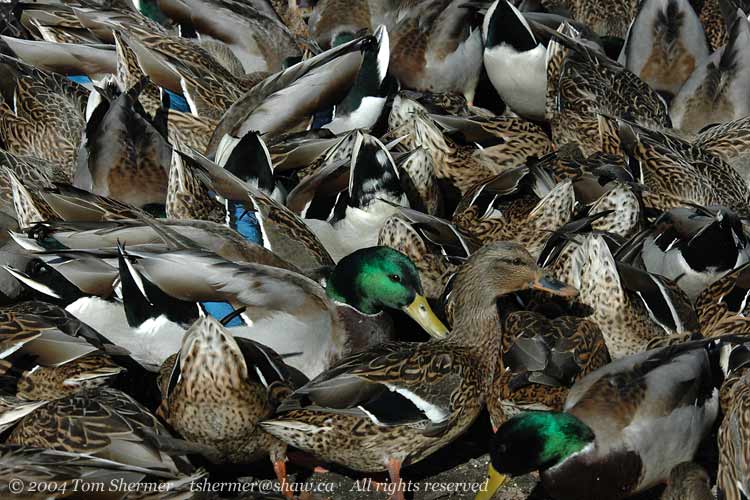 |
|
As the duck ruckus
died down, I saw a female American Wigeon in the area. Biding
my time until I could get her relatively alone, I did some close-ups
of her head and face.
I know she's a duck,
and probably has different tastes than I do, but a bill full of
mud just can't taste good. It ain't right.
|
|
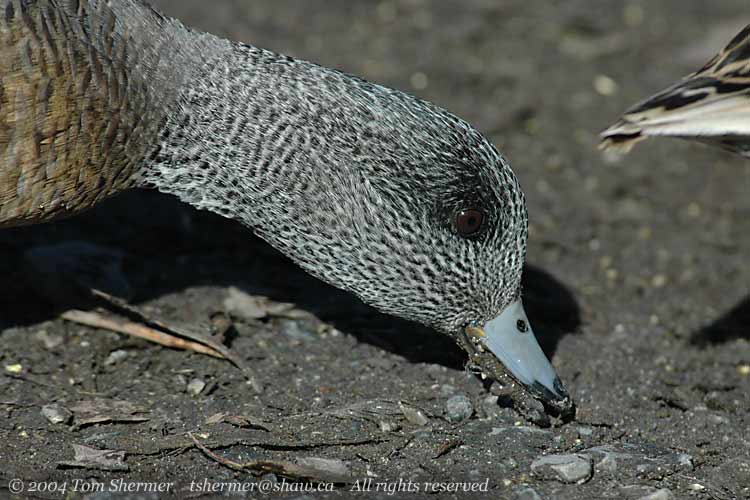 |
| Also floating
around was a single female Wood Duck, showing some of her beautiful
wing colors. |
|
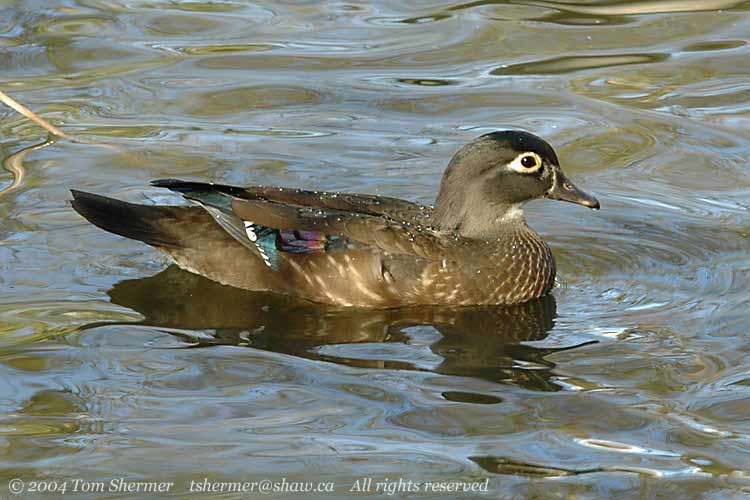 |
| I was thinking
that this pond-by-the-parking-lot was turning out to be more interesting
than usual. But just then, I heard some honking, and a few Snow
Geese flew over me. |
|
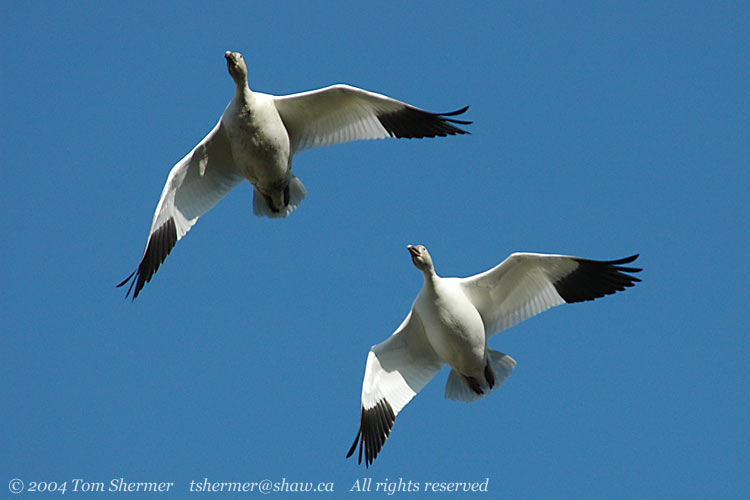 |
|
The geese landed on
the other side of a line of trees. And then another flight came
in and did the same. I decided to go over there and see if I could
get shots of them on the ground.
But before I could
make my way through the maze of ducks, a guy who had been standing
near me pointed out that it wasn't only the birds that seemed
to be swarming up around the lady distributing the birdseed--the
fish appeared to be doing the same.
|
|
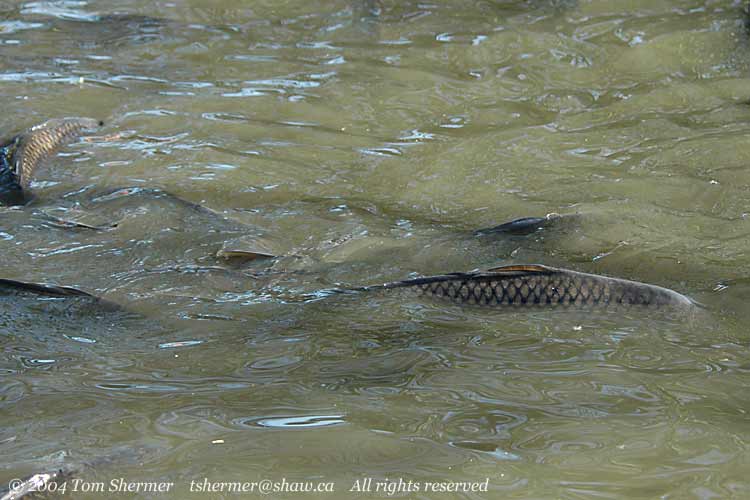 |
|
Now that was an odd
sight to see. I don't know if they were really coming up to eat
what the lady was giving out, or if they were just hanging in
the shallows as part of their spawning process.
After getting a few
shots of the fish, I headed around a stand of trees to the place
where the Snow Geese had been landing. There I was treated to
a field full of them. Faithful photographer that I am, I stayed
and photographed them, despite being fairly tired already. I was
rewarded with some decent medium-range goose studies. In this
one, the darker individuals in the front are juveniles.
|
|
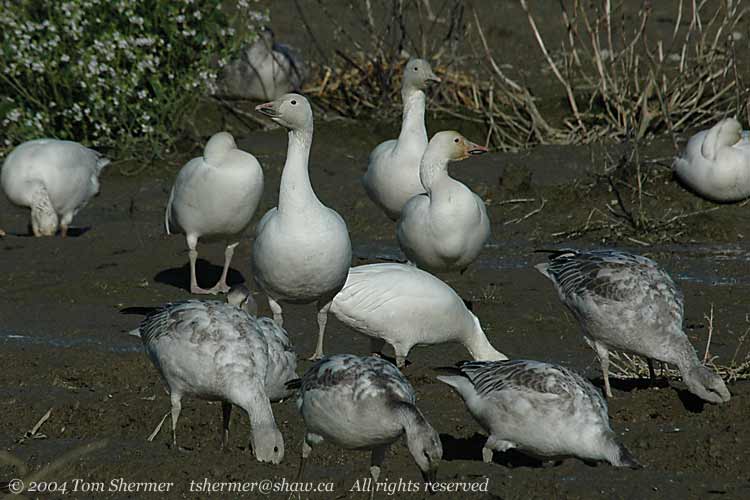 |
|
There is a dark variant
of the Snow Goose, which used to be called the Blue Goose, but
I didn't see any in the flock. I have spoken with someone who
said that they found two of them there at the refuge, though,
so I'll keep looking.
Every now and then,
small flights of geese would come or go.They seemed to be a bit
awkward in flight, though, and I even saw a midair collision or
two.
|
|
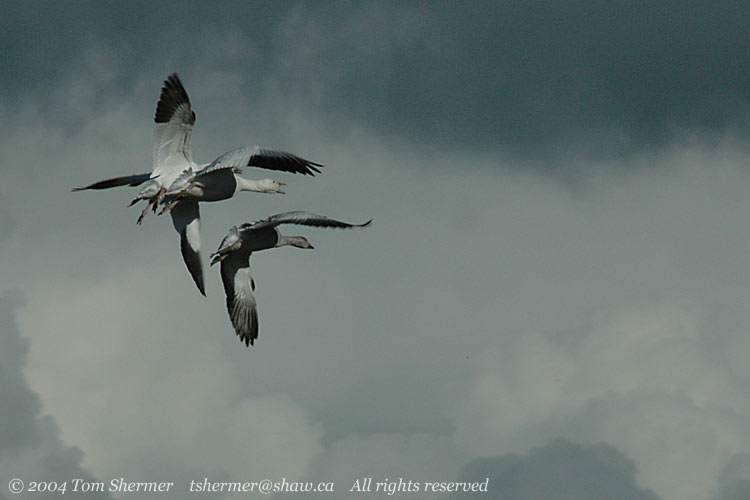 |
| The whole
flock was an impressive sight; I'd guess it was around five to ten
thousand birds. Here's a slice of the flock. |
|
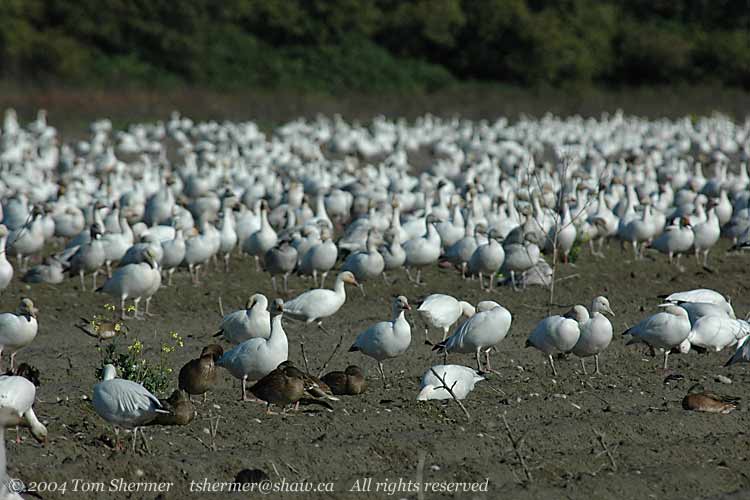 |
| Well, that
was about all that I had the energy for, so I got back in my car
and started for home. However, on the way back, I noticed a pair
of Bald Eagles on one of the utility poles beside the bridge to
Westham Island. This pole is about three times the height of your
everyday utility pole, so they're pretty far up there. |
|
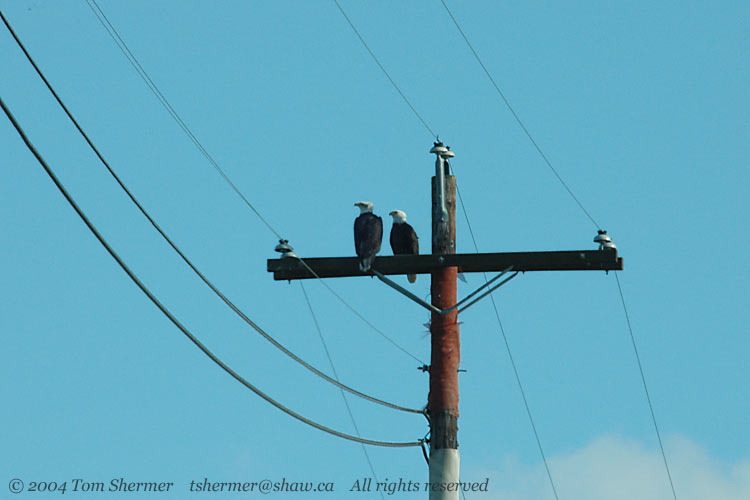 |
|
I frequently see a
pair of eagles around this area, and I wouldn't be surprised if
it's this same pair that I'm always seeing. Then again, at Reifel
I've seen groups of three or four eagles, so there may be more
than one pair in the area.
Following the fall
fowl,
Tom
|
|